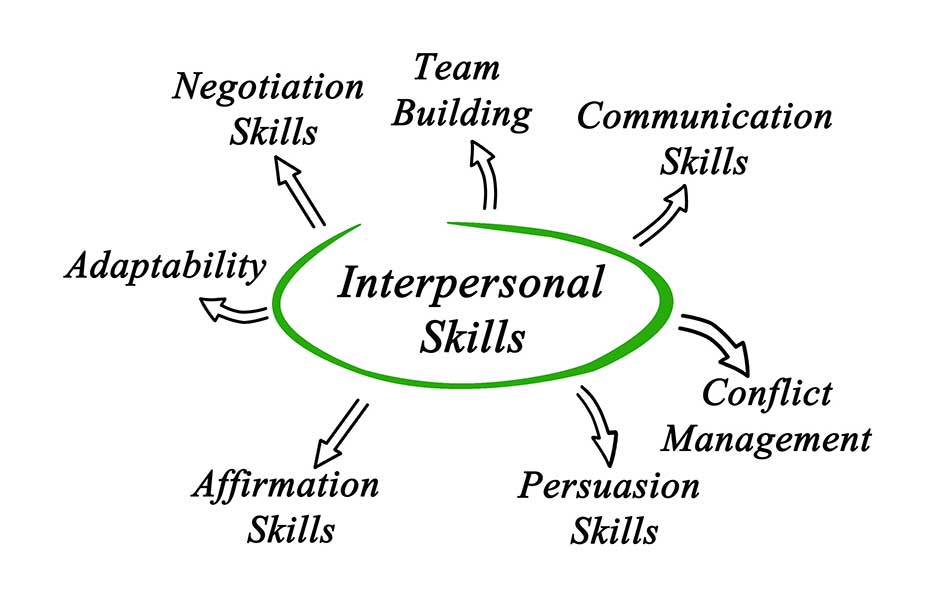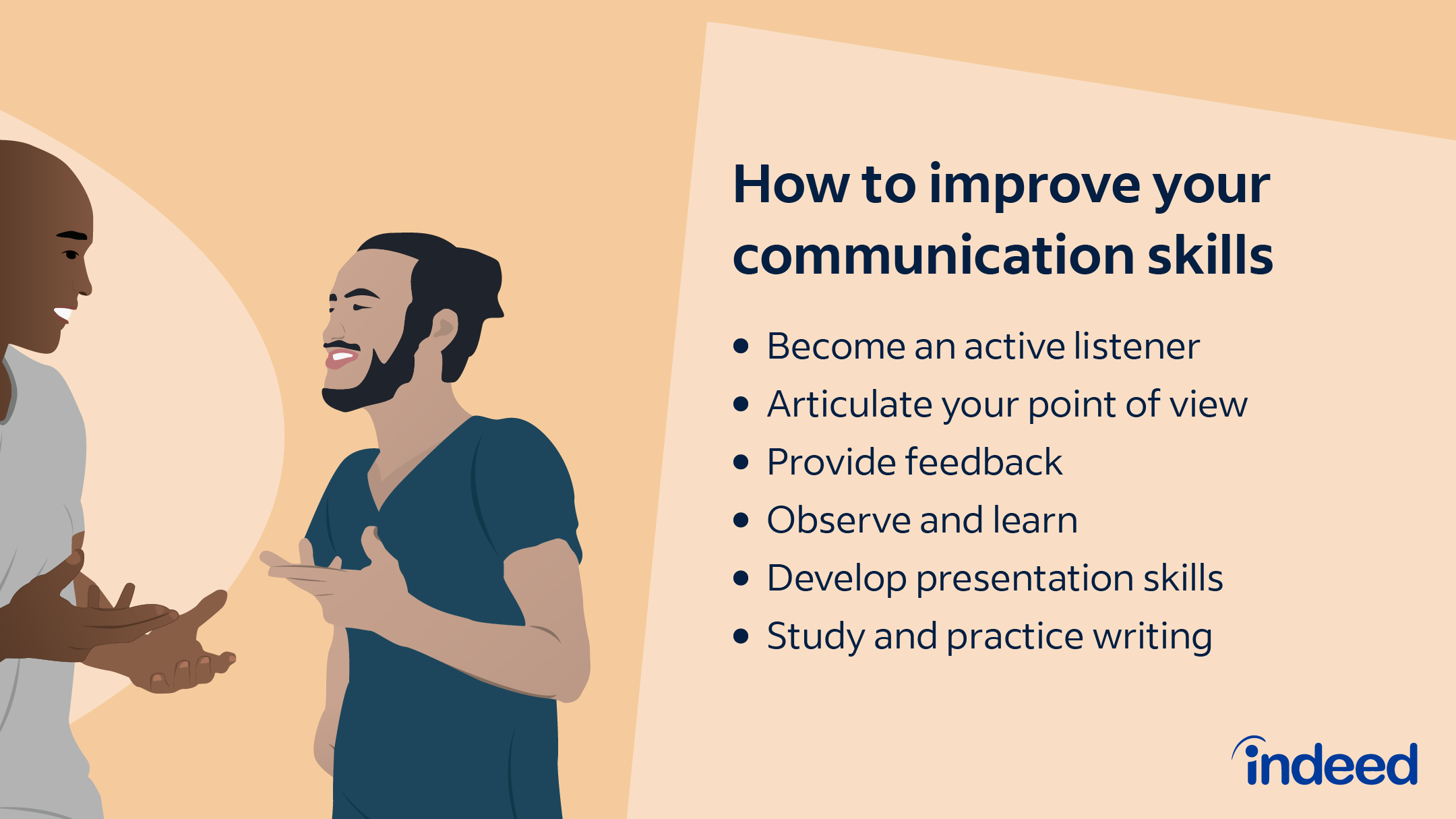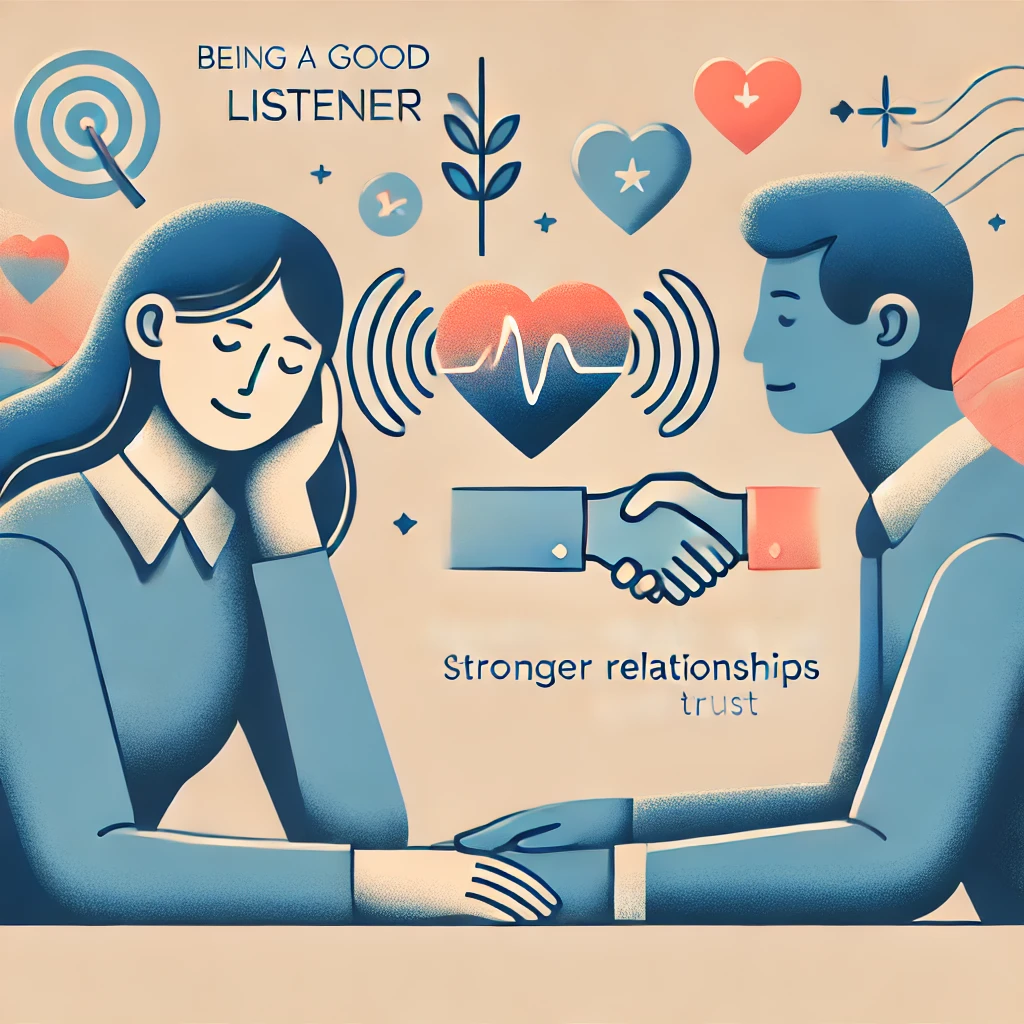Communication is the foundation of success in any professional setting. Whether you’re giving a presentation, leading a team meeting, engaging with clients, or simply sending an email, the ability to convey your ideas clearly and effectively determines your impact. In a world where collaboration, remote work, and cross-functional teams are more prevalent than ever, strong communication skills are essential for navigating the complexities of modern professional life.
While some may view communication as a soft skill, it is often the decisive factor in career development, advancement and organizational success. Poor communication can lead to misunderstandings, conflicts, and reduced productivity, while effective communication fosters collaboration, builds trust, and drives results. In this article, we’ll explore the core communication skills every professional should master and provide strategies for enhancing these skills to ensure long-term career success.
Why Better Communication skills are Key to Professional Success
Impact of Good Communication on Career Growth
Effective communication isn’t just about getting your point across—it’s about connecting with others, building relationships, and facilitating collaboration. In today’s workplace, whether you’re working in a corporate office or from home, the ability to communicate clearly and confidently is a vital component of professional growth.
For example, imagine a scenario where a project manager is leading a team of diverse individuals, each with different areas of expertise. The project manager’s ability to clearly outline goals, delegate tasks, and provide feedback ensures that the project runs smoothly. If they fail to communicate effectively, it could result in confusion over responsibilities, missed deadlines, and ultimately, a failed project. Conversely, strong communication skills allow the manager to guide their team, foster collaboration, and achieve project success.
Additionally, good communication skills are often a deciding factor in career advancement. Many leadership roles require not only technical expertise but also serious communication skills important the ability to communicate complex ideas in a way that is easily understood by colleagues, stakeholders, and clients. Leaders who can articulate their vision and motivate their teams are seen as more effective and are more likely to be promoted. In fact, studies consistently show that communication skills rank among the top qualities that employers seek in their leaders.
On the flip side, poor communication can be disastrous for both individuals and organizations. When communication is unclear, incomplete, or inconsistent, it leads to misunderstandings that can spiral into larger issues. Imagine an employee receiving a vague email with incomplete instructions on a critical task. Without clarity, the employee might waste time trying to interpret the message or, worse, execute the task incorrectly. This not only causes frustration for the employee but also results in delays, rework, and diminished productivity for the entire team.
In some cases, poor communication can even lead to conflicts between team members or between departments. Misunderstandings can breed resentment, especially if people feel that they are not being heard or their input is being overlooked. This can create a toxic work environment where collaboration is stifled, and productivity suffers. Moreover, miscommunication between a company and its clients can lead to missed opportunities, lost business, and a damaged reputation.
For organizations, the cost of poor communication is high. Research shows that companies with poor communication practices are less likely to retain top talent, and they experience higher levels of employee dissatisfaction. Furthermore, when communication breakdowns occur, projects are more likely to fail, leading to financial losses and reduced competitiveness in the marketplace.
Core Communication Skills Every Professional Should Master

Active Listening: A Fundamental Communication Skill
Active listening is one of the most important communication skills but is often overlooked. It is easy to assume that listening is passive, but in reality, it requires effort and focus. Active listening non verbal communication involves fully engaging with the speaker, not just hearing their words but understanding their message and responding thoughtfully.
For professionals, active listening is particularly important because it allows you to gather important information, understand different perspectives, and build stronger relationships. For example, during a client meeting, active listening ensures that you capture the client’s concerns, preferences, and expectations, which is crucial for delivering a successful solution. By listening attentively, you not only show respect for the speaker but also reduce the likelihood of misunderstandings.
Here’s how you can practice active listening:
- Focus on the speaker: Avoid distractions such as checking your phone or thinking about your response while the other person is speaking. Be present in the conversation.
- Use non-verbal cues: Nod to show understanding, maintain eye contact, and use open body language to signal that you are engaged.
- Ask clarifying questions: If something is unclear, ask the speaker to elaborate. This shows that you are actively processing the information.
- Summarize and reflect: Paraphrase the speaker’s key points to ensure mutual understanding. For example, you might say, “So, what I’m hearing is that you’d like more clarity on the project timeline. Is that correct?”
Active listening is especially crucial in leadership roles, where understanding the needs and concerns of your team is key to fostering a positive and productive work environment. Leaders who listen actively can address issues before they escalate and can motivate their teams by showing that they value their input.
Clear and Direct Communication
In professional settings, clarity is king. Clear communication ensures that your message is easily understood, reduces the risk of misinterpretation, and helps you achieve your objectives more efficiently. However, many professionals struggle with clarity, either by overloading their audience with too much information or using technical jargon that confuses rather than clarifies.
To communicate clearly and directly:
- Know your audience: Tailor your message to the knowledge level and needs of your audience. For example, if you’re speaking to a technical team, it may be appropriate to use industry-specific terminology. However, if you’re addressing non-technical stakeholders, it’s important to simplify your message.
- Get to the point: Avoid unnecessary details and focus on the main message you want to convey. Start with the most important information, then provide additional context if needed.
- Use examples and analogies: If you’re explaining a complex concept, use relatable examples or analogies to make the message easier to understand. For instance, when explaining a technical process, compare it to something familiar to your audience, like assembling a puzzle.
- Be concise: Long-winded explanations can cause your audience to lose interest or miss the main point. Keep your messages short, clear, and to the point.
Clear communication also involves setting expectations. For example, if you’re assigning a task to a colleague, make sure you clearly outline the deliverables, deadlines, and any specific requirements. This helps prevent misunderstandings and ensures that everyone is aligned.
Nonverbal Communication: What Your Body Language Communicates
Communication isn’t just about the words you say; it’s also about how you say them. Nonverbal communication, including body language, facial expressions, and tone of voice, can significantly impact how your message is received. In fact, studies suggest that up to 93% of communication is through nonverbal signals, meaning that your body language and tone can convey just as much as your words—or even more.
For example, imagine giving a presentation with your arms crossed and avoiding eye contact. Even if your content is strong, your audience may perceive you as defensive, disinterested, or unconfident. Conversely, standing tall, using open gestures, and making eye contact can convey confidence, enthusiasm, and approachability.
Here are some key nonverbal cues to be mindful of in professional settings:
- Posture: Stand or sit with an open posture—avoid crossing your arms, slouching, or turning your body away from the speaker.
- Facial expressions: Smile when appropriate, and make sure your facial expressions align with your message. For example, if you’re discussing a positive outcome, your facial expression should reflect that.
- Eye contact: Maintain steady eye contact, but avoid staring. Making eye contact shows that you’re engaged and attentive.
- Gestures: Use hand gestures to emphasize key points, but be mindful not to overdo it. Too many gestures can be distracting.
Nonverbal communication is especially important in leadership roles, where body language can influence how others perceive your authority and confidence. By being aware of your nonverbal cues, you can ensure that your positive body language both supports and reinforces your message, making you a more effective communicator.
Adaptability in Communication
Adaptability is a crucial communication skill, particularly in diverse and fast-changing work environments. Professionals who can adapt their verbal communication and style based on the situation, audience, and cultural context are more likely to be effective in their interactions.
For instance, the way you communicate with a colleague in a casual setting might differ from how you present ideas to a senior executive. In a leadership presentation, you may need to be more formal, data-driven, and concise, while in a brainstorming session with your team, you might adopt a more collaborative and open-ended approach.
Adaptable communication also means being aware of cultural differences in communication styles. In a global workplace, different cultures may have varying norms around communication, such as how direct or indirect feedback should be, or how much personal information is shared. Being culturally sensitive allows you to build rapport and trust with colleagues and clients from diverse backgrounds.
To become more adaptable in your digital communication.:
- Observe: Pay attention to how your audience responds to your message. If you notice confusion or disengagement, adjust your approach.
- Ask for feedback: If you’re unsure whether your message resonated, ask your audience for feedback. This can help you refine your communication style over time.
- Be flexible: Be willing to change your tone, style, or content based on the needs of your audience. For example, if your audience seems overwhelmed by technical details, simplify your message or use visuals to help illustrate key points.
Adaptable communication is a hallmark of effective leadership. Leaders who can adjust their communication style to suit different audiences and contexts are better equipped to inspire, motivate, and guide their teams.
Common Mistakes That Hinder Effective Communication
Information Overload and Lack of Focus
In today’s information-saturated world, it’s easy to fall into the trap of providing too much information at once. Information overload occurs when an audience is bombarded with too many details, making it difficult for them to process and retain the key points. This is particularly problematic in professional settings, where employees are often juggling multiple tasks and priorities.
To avoid information overload, it’s important to:
- Prioritize key points: Focus on the most important information and save less critical details for later. For example, in a presentation, start with the main message or conclusion, then provide supporting data.
- Use visuals: Visual aids such as charts, graphs, and bullet points can help break down complex information into digestible chunks. This makes it easier for your audience to follow along and retain the key points.
- Encourage questions: Give your audience the opportunity to ask questions or request clarification. This ensures that they understand the information before moving on to the next topic.
In written communication, information overload can occur when emails or reports are too long or include too much detail. To avoid this, use bullet points or headers to organize information and keep your messages concise.
Inconsistent Messaging and Assumptions
Another common communication mistake is delivering inconsistent messages. Inconsistencies can arise when leaders or team members say one thing but do another, or when different parts of the organization communicate conflicting information. This can create confusion, erode trust positive professional relationships, and lead to misalignment within teams.
For example, if a manager emphasizes the importance of work-life balance but consistently sends emails after hours, it sends a mixed message. Similarly, if different departments provide conflicting information about a project’s timeline, it can lead to confusion and delays.
To avoid inconsistent messaging:
- Be clear and consistent: Ensure that your messages align with your actions and are consistent across different channels of communication.
- Verify understanding: Don’t assume that everyone is on the same page. Ask your team for feedback to ensure that they understand the message correctly.
- Document key decisions: In team meetings or project updates, document key decisions and share them with all relevant stakeholders. This helps ensure that everyone has access to the same information and can refer back to it later.
Ignoring Cultural and Emotional Differences
In a diverse workplace, communication is often influenced by cultural and emotional factors. Different cultures have different norms around communication, such as how direct or indirect feedback should be, or how much personal information is appropriate to share. Ignoring these cultural differences can lead to misunderstandings and misinterpretations.
For example, in some cultures, direct feedback is seen as helpful and constructive, while in others, it may be perceived as rude or confrontational. Similarly, emotional factors such as stress or personal challenges can affect how individuals receive and interpret messages. A stressed or frustrated employee may misinterpret neutral feedback as criticism, leading to unnecessary conflict.
To communicate effectively across cultural and emotional differences:
- Be aware of cultural norms: Take the time to learn about the communication styles and preferences of colleagues from different cultural backgrounds. This helps you avoid missteps and build stronger relationships.
- Practice empathy: Consider the emotional state of your audience when delivering feedback or discussing sensitive topics. Acknowledge their emotions and adjust your tone or approach accordingly.
- Encourage open dialogue: Create a safe space where colleagues feel comfortable discussing their cultural or emotional needs. This fosters mutual understanding and helps prevent miscommunication.
Strategies to Better Communication Skills for Professionals

Develop Active Listening Habits
Improving your active listening skills requires conscious effort and practice. To become a better listener, start by eliminating distractions during conversations. This means putting away your phone, turning off email notifications, and focusing fully on the speaker. You can also use verbal affirmations, such as “I understand” or “That’s a great point,” to show that you are engaged in the conversation.
Another way to improve active listening is to practice reflective listening. This involves paraphrasing the speaker’s message in your own words to ensure that you’ve understood them correctly. For example, after a colleague explains a complex problem, you might say, “So, if I understand correctly, you’re saying that the main issue is the tight deadline for the project. Is that right?” Reflective listening not only confirms understanding but also shows the speaker that their message is being heard and spoken words are valued.
Active listening can also be improved through mindfulness practices. Mindfulness teaches you to be fully present in the moment, which is crucial for effective active listening communication too. By staying focused on the speaker and avoiding distractions, you can improve both your understanding and your relationships with colleagues.
Feedback Loops: Giving and Receiving Constructive Feedback
Feedback is an essential part of professional growth, but giving and receiving feedback effectively can be challenging. When providing feedback, it’s important to strike a balance between constructive criticism and positive reinforcement. Too much criticism can be demoralizing, while too much praise can prevent individuals from recognizing areas for improvement.
A good feedback loop involves:
- Providing specific examples: When giving feedback, be specific about the behavior or action that needs improvement. For example, instead of saying, “You need to communicate better,” you could say, “In the last team meeting, it was difficult to follow your presentation because it lacked clear structure. Next time, consider organizing your points into a more logical flow.”
- Offering solutions: Constructive feedback should not only point out areas for improvement but also offer solutions or suggestions for how the individual can improve. This makes the feedback actionable and helpful.
- Receiving feedback with an open mind: When receiving feedback, it’s important to remain open and avoid becoming defensive. Remember that feedback is an opportunity for growth, and the person providing it is likely trying to help you improve. Take the feedback seriously, ask clarifying questions if needed, and use it to make positive changes.
Empathy and Emotional Intelligence
Empathy is the ability to understand and share the feelings of others, and it is a critical component of effective communication. In the workplace, empathy allows you to connect with colleagues, clients, and team members on a deeper level, fostering stronger relationships and enhancing collaboration.
Emotional intelligence (EI) encompasses empathy as well as other skills, such as self-awareness, self-regulation, and social and interpersonal skills beyond. High emotional intelligence enables professionals to navigate complex social situations, manage their own emotions, and respond appropriately to the emotions of others.
For example, a manager with high emotional intelligence will be able to recognize when an employee is feeling overwhelmed and offer support or flexibility. Similarly, a sales professional with high EI will be able to pick up on subtle cues from a client and adjust their approach accordingly to close a deal.
Empathy and emotional intelligence are particularly important in conflict resolution. When tensions run high, understanding the emotions and perspectives of both parties can help de-escalate the situation and find a solution that satisfies everyone involved.
Practical Exercises to Better Communication Skills
Active Listening Practice
Improving your active listening skills requires regular practice. One valuable exercise is to pair up with a colleague and engage one on one meetings in reflective listening. Have one person speak for a few minutes about a work-related topic, while the listener refrains from interrupting and instead paraphrases the key points afterward. This exercise helps you practice listening without formulating a response, which is a common habit that detracts from effective communication skills.
Another helpful exercise is to role-play challenging communication scenarios, such as handling a difficult client or resolving a conflict between team members. By practicing these scenarios in a low-stakes environment, you can develop and improve your communication skills and ability to listen deeply, respond thoughtfully, and navigate difficult conversations with confidence.
Mindfulness meditation can also be an effective tool for improving active listening. Practicing mindfulness teaches you to stay present and focused, which is essential for listening attentively. Try incorporating short mindfulness exercises, such as deep breathing or a five-minute meditation, into your daily routine to enhance your focus and listening skills.
Team-Building Communication Activities
Team-building exercises can be a fun and effective way to improve communication skills in the workplace. One popular activity is the “Telephone Game,” where participants form a line and pass a message from one person to the next. By the time the intended message reaches the last person, it is often significantly altered, illustrating how easily information can be distorted when communication is unclear.
Another useful activity is “Empathy Mapping,” where team members discuss a work-related situation and explore how different individuals might perceive it. This exercise encourages team members to consider each other’s perspectives, fostering empathy and improving team communication.
Other team-building activities, such as virtual meetings, group problem-solving challenges or role-playing scenarios, can also help improve communication skills by encouraging collaboration and fostering open dialogue.
Resources for Further Improving Communication Skills
While the strategies and exercises discussed in this article provide a solid foundation for enhancing your communication skills, there are always opportunities for further growth and development. For professionals looking to take their communication abilities to the next level, specialized training programs can offer valuable insights and practical experience.
Rise Up Global offers collaboration training programs designed to improve team communication and productivity. To learn more about their offerings and how they can benefit your professional development, visit RiseUP Global Team Collaboration Programs.
By investing in your communication skills through resources like these, you can continue to grow as a professional and unlock new opportunities for success in your career.
Long-Term Benefits of Mastering Professional Communication

Improved Team Collaboration and Productivity
Effective communication is the key to successful teamwork. When team members communicate openly and clearly, they are more likely to collaborate effectively, share ideas, and solve problems together. Communication ensures that everyone understands their roles, responsibilities, and goals, which leads to higher levels of trust and accountability within the team.
For example, in a marketing team, clear communication ensures that designers, copywriters, and project managers are aligned on the campaign’s vision and deliverables. By maintaining open lines of communication throughout the project, the team can address any challenges that arise and stay on track to meet deadlines.
In addition to improving collaboration, strong communication skills also enhance productivity. When team members understand what’s expected of them and can ask for clarification when needed, they are more likely to complete tasks efficiently and avoid unnecessary delays.
Stronger Leadership and Decision-Making
Communication is a critical leadership skill, and leaders who excel in communication are better equipped to inspire, motivate, and guide their teams. Effective communication allows leaders to articulate their vision, share their goals, and provide feedback that helps their teams succeed.
Leaders with strong communication skills are also better decision-makers. They are able to gather input from diverse perspectives, ask the right questions, and synthesize information from multiple sources to make informed decisions. Furthermore, they are able to communicate their decisions clearly and confidently, ensuring that their teams are aligned and committed to achieving the desired outcomes.
Leaders who communicate effectively build trust with their teams, foster a positive work environment, and create a culture of transparency and collaboration. This positive attitude not only improves team morale but also drives long-term organizational success.
Mastering communication skills is an ongoing journey that requires practice, self-awareness, and a commitment to continuous improvement. By developing active listening habits, communicating clearly and concisely, and practicing empathy, professionals can enhance their interactions with colleagues, clients, and stakeholders. Whether you’re looking to advance your career, improve team collaboration, or become a more effective leader, communication is the key to unlocking your potential.
Invest in your communication skills today, and watch as your professional and personal relationships,, leadership abilities, and overall success soar. Keep practicing, seek feedback, and refine your communication techniques to ensure long-term growth and career success.

